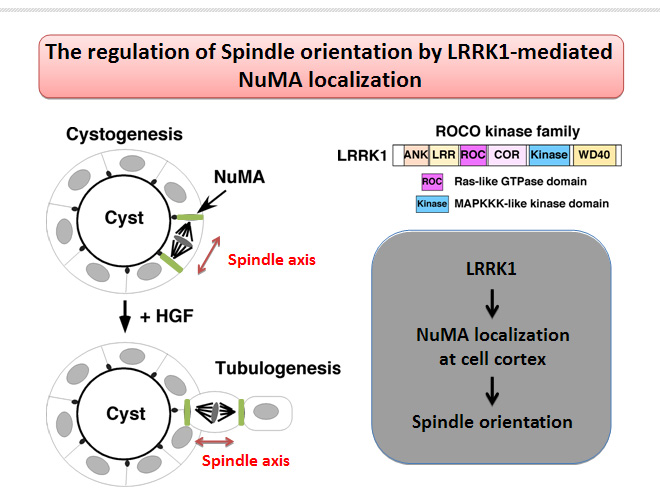|
HOME > Proposed research projects > 2012-2013: Proposed research projects 04
 2012-2013: Proposed research project 04The conversion mechanism of spindle orientation in tubulogenesis
Purpose of the Research ProjectDuring epithelial morphogenesis, the correct orientation of cell division is known to be important for the integrity of epithelial sheets as well as tissue elongation and shaping. Because the orientation of mitotic spindle determines the cleavage plane in cell division, it is important to understand the regulatory mechanism of spindle orientation during epithelial morphogenesis. We have recently found that leucine-rich repeat kinase 1 (LRRK1), a member of ROCO family kinase, regulates mitotic spindle orientation. Knockdown of LRRK1 by siRNA inhibits the localization of NuMA at the cell cortex, leading to spindle misorientation. In this project, we attempt to reveal how LRRK1 regulates the localization of NuMA at the cell cortex and how this regulation contributes to the conversion of spindle orientation in epithelial morphogenesis. Content of the Research ProjectTo understand the role of LRRK1 in the regulation of spindle orientation in epithelial morphogenesis, we use a 3D Madin Darby canine kidney (MDCK) cell-based system. When MDCK cells are cultured in matrigel, these cells form spherical cysts consisting of single-layered cells surrounding a central lumen. Upon HGF stimulation, MDCK cells form tubules from the cyst. In this project, we try to reveal the regulatory mechanism of spindle orientation in the process of conversion from cystogenesis to tubulogenesis, especially focusing on the regulation of NuMA mediated by LRRK1. Expected Research Achievements and Scientific SignificanceThe regulation of mitotic spindle orientation is known to be required for several organ development. Our research will contribute to a better understanding of these morphogenesis.
|








